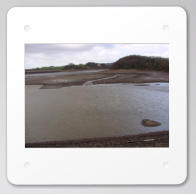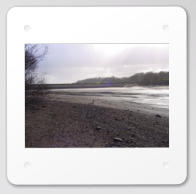© www.white-coppice.co.uk 2022

One dark cold January morning as we approached Rivington at
7.45am, a man from the water board was re-directing traffic to
Rivington via Horwich. When asked why, he just said "There's
something wrong with the reservoir." He would say no more. It
later turned out that there was a problem with the embankment
near The Street. Repairs took several months. Today 10/11/12,
I found the article below - it makes interesting reading
The photo's were taken in February and March 2002. Sixteen
pumps were being used to keep Rivington Reservoir drained.
Some surplus water was pumped into the River Yarrow.
January 2002


The following is taken from The Environment Agency’s “Lessons from Historical Dam Incidents”
4.2.2 Incident No. 39: Rivington Upper (Yarrow embankment)
Description of dam
The 12-m high embankment completed in 1857 has a central puddle clay core with a clay filled cut-off trench. Draw-off is by means of a culvert
placed in an excavation beneath the embankment.
Identification of incident
At the time of the incident, reservoir keepers habitually visited the dam three times a week. The reservoir keeper was in the culvert on 8 January
2002 to monitor a small leak from the roof which had existed for many years. On 9 January 2002, the keeper was driving across he top of the
embankment en route to another dam and saw a broad band of discoloured water emerging from the culvert. The identification of the sudden
increase in leak was through a providential sighting. A major leak was occurring through the sidewall of the culvert.
Notification of incident
The reservoir keeper contacted the supervising engineer who reached the site an hour later, about 14:30. The reservoir safety manager reached
the reservoir soon after and contacted an all reservoirs panel engineer who arrived on site early the following day. The undertaker’s operational
response centre was alerted to the situation and dealt with all the contacts with the police, Lancashire County Council and local residents. Some
53 high-risk properties were identified; a warning letter was distributed, but in the event no one was evacuated.
Emergency action
An attempt was made to block the point of leakage with rags, a board and wooden struts. The scour valves were partially opened to avoid
disturbing the temporary struts but this had little effect on the reservoir level, as the reservoir was still overflowing the following morning.
Pumps were used overnight to lower the reservoir.
Evidence 38 Report – Lessons from historical dam incidents
Inflow into Upper Rivington from the upper reservoir Anglezarke was halted by raising its spillway level. An all-night watch was mounted on
the dam. The leak was plugged and strutted the following morning and the scour valves were opened fully. Upper Rivington was drawn down at
a rate of one metre per day. The rapid drawdown caused some minor flooding of house foundations under construction.
Lessons
Early detection of the leakage and rapid lowering of the reservoir were key factors in the successful management of the incident.
The main lessons learnt were:
• Internal erosion incidents can develop rapidly.
• Regular and frequent surveillance is essential to detect serious defects at dams while there is still time to take effective action. As a result of the
incident, the frequency of surveillance was increased.
• The need for an on-site emergency plan which details the actions to be taken in the event of serious progressive internal erosion, including
means of diverting inflows, was highlighted by this incident.
• Contractors should be on call to carry out works at short notice, overnight if necessary.
• The value of a functioning bottom outlet, which allows the reservoir to be lowered rapidly in the event of a problem, is essential.













































